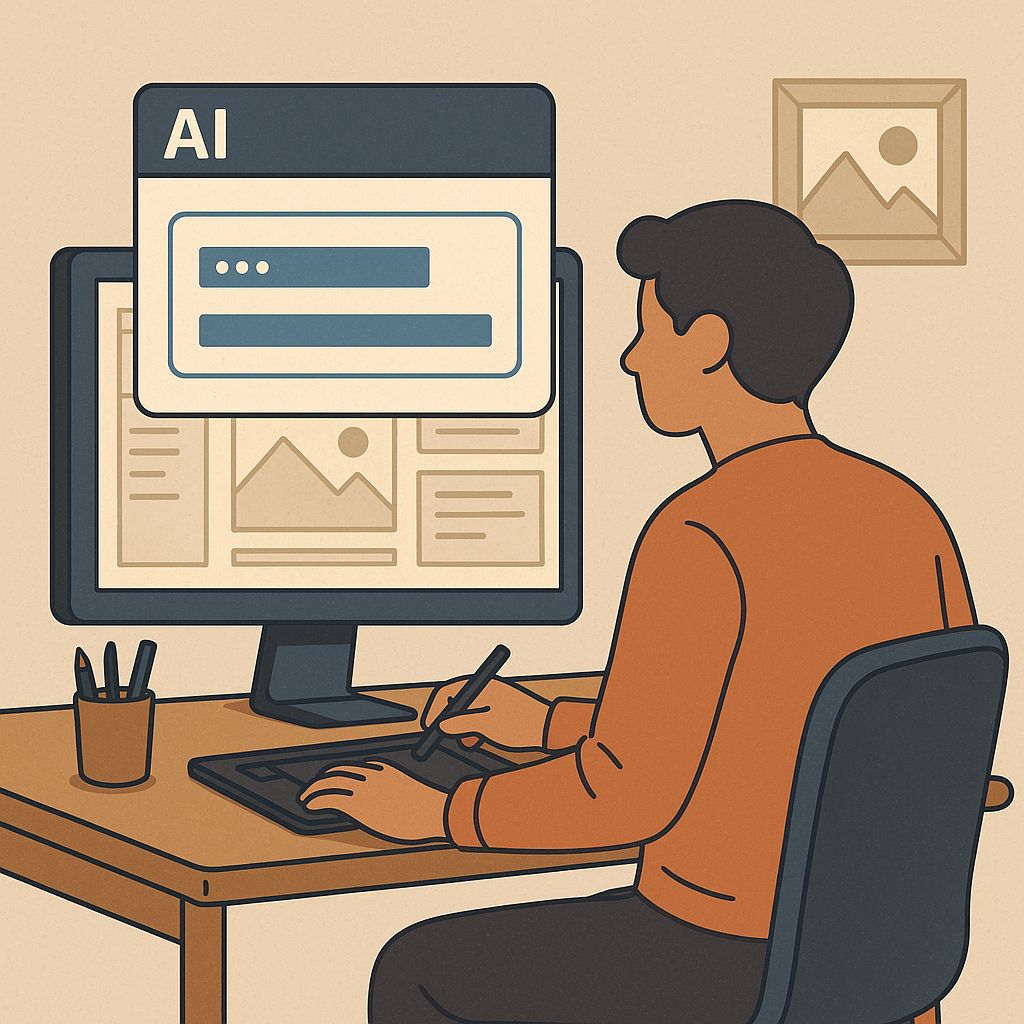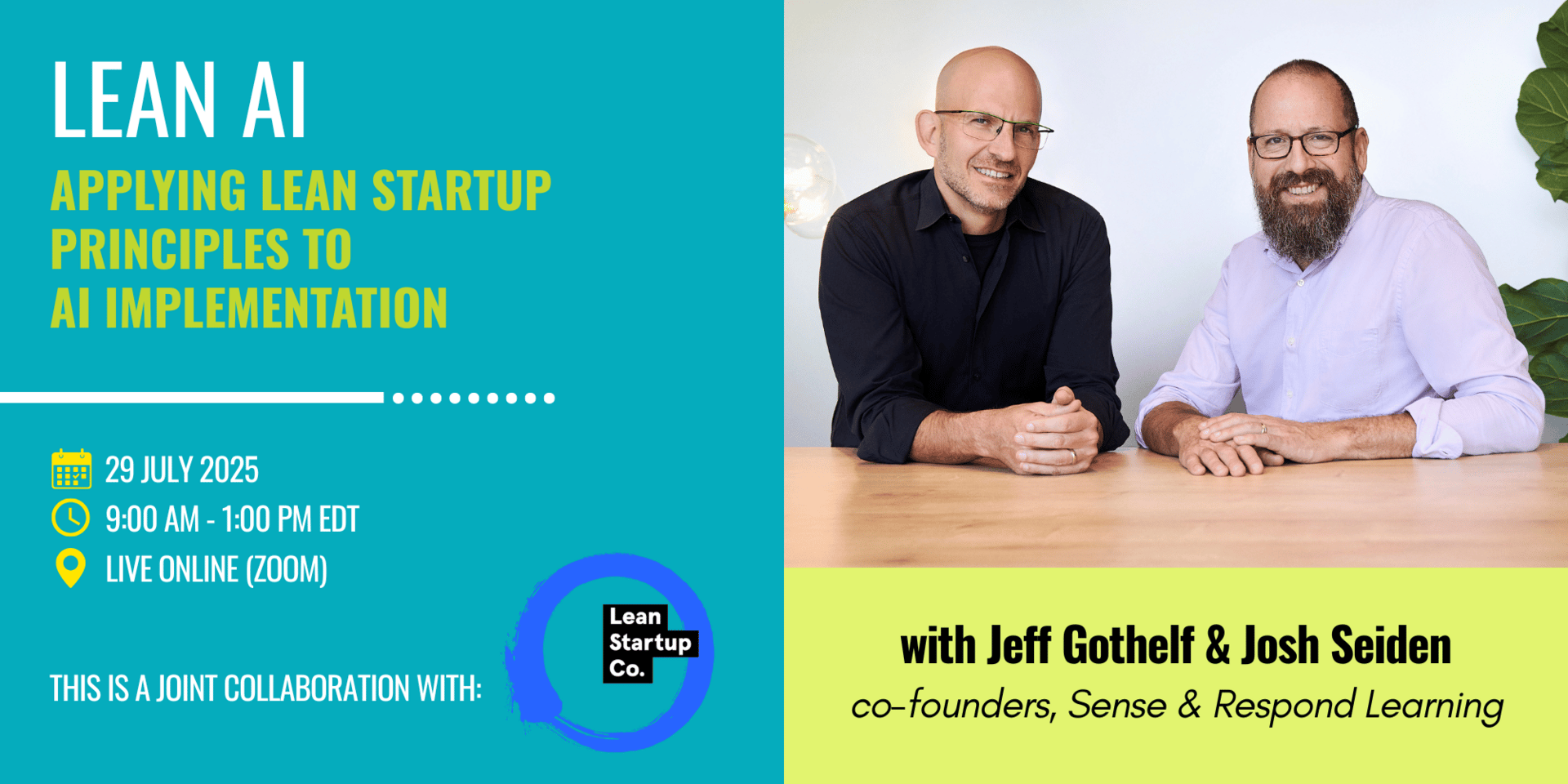- Continuous Learning
- Posts
- The Impact of AI on UX Design Work
The Impact of AI on UX Design Work
At a Glance
AI tools dramatically increase UX design productivity, turning days of work into hours or minutes
Core UX challenges remain the same: understanding human behavior and solving real problems
The risk: outsourcing critical thinking to AI instead of deeply understanding your users
The opportunity: Use AI to build better, faster—but only after understanding the context and the humans you serve
Hey folks,
After almost three decades in tech and watching my daughter graduate with a UX degree this past spring, I can’t help but reflect on how dramatically AI is reshaping our field. The tools she has access to as a new designer would have blown my mind when I started out with Visio and Photoshop in the late ’90s.
What's fascinating is that while the productivity gains are incredible—turning days of work into hours or minutes—the fundamental challenges of UX design haven't changed at all. We're still building for humans, and that still requires the same deep understanding of user behavior and real problems that it always has. You just can’t get around it.
But there's a real risk here. With AI making everything faster and easier, it's tempting to let the algorithms do the thinking for us. That's a mistake that could turn every digital product into a homogenized "best practice" solution.
So let’s talk about what I'm seeing as both the massive opportunity and the critical warning for designers navigating this new landscape.
Jeff
PS - We’ve got a lot of great classes coming up at Sense & Respond Learning. Check out the list below.

The Impact of AI on UX Design Work
I’ve been working professionally in the tech field for 26 years. After a bit of a late start compared to my university cohort (rock bands, circuses, and a couple of other wayward explorations delayed me) I gravitated toward web design. That transitioned quickly into information architecture, followed by user interface design, and eventually user experience design (UX). While I’ve moved on from UX work, these days I’ve been thinking about “the old days” of UX a lot—especially after attending my daughter’s graduation from university with, perhaps not surprisingly, a degree in user experience design. In many ways she’ll be doing work very similar to the work I was doing when I started. In many others, UX is a whole new ball game. The culprit? Just as is the case everywhere else these days, it’s AI.
What AI’s not changing in UX
I’m not a luddite nor an AI denier. However, many challenges that we faced building Web 1.0, 2.0, and mobile products and services remain the same in the age of AI. Above all, we have to remember that the products and services we build serve other humans. Many of those humans have grown up with a mobile phone, laptop, and screen-based interaction models as the default. That doesn’t mean that they instinctively will know how to interact with our newly empowered AI-driven tools.
So many companies are just “implementing AI” as a perceived way to stay competitive. Much of the time this is rushed, designed so that they can push it out alongside an AI badge on their marketing copy. What we end up with is AI buttons everywhere with no rationale or meaningful workflow for their usage. They don’t make the user more successful. They make the user experience worse.
These are classic UX design problems and they’re not going away; they’re the same issues, albeit with different technological shiny objects, that we were dealing with as freshmen designers in the late ’90s and early 2000s.
What AI’s definitely changing
With all that being said, there is massive change happening on a nearly daily basis in the world of user experience design due to the proliferation of AI. From my external perspective, the fundamental change I’m seeing is in the doing of the design work. The tools we used when I started my career – Visio, Omnigraffle, Photoshop, Illustrator, Dreamweaver (nod along if these make you nostalgic) – seem like caveman-carved picks compared to the AI-powered automation my daughter and her classmates have at their disposal.
Where this nets out is in productivity. Tools like Lovable and Bolt generate clickable usable prototypes in minutes versus the hours, if not days, of work it used to take. AI improvements in collaboration and layout services like Mural and Miro reduce the time it takes to get from a blank page to something useful to seconds. Customer intelligence tools like Dovetail make capturing, summarizing, and synthesizing user feedback quick and easy. Even the powerhouses of the past decade or two (or four) like Figma and Adobe have put AI features to use in ways that drive designer and team productivity to levels we never imagined when we were building the first set of dot com websites (after we just nearly avoided the Y2K disaster 😉.)
Where it once took days if not weeks to get to a clickable, usable prototype a team could gather around and debate—not to mention show to users, it now takes hours at most. The number of people it once took to get to a customer-facing deliverable (not necessarily a final product) is also dramatically lower. Teams are leaner. Work is faster. Feedback flows in at incredible rates. It’s actually hilarious for me to think that when I worked at AOL we’d have to wait 6–12 months to get real user feedback on our work. Today, it can happen in 6–12 hours. Incredible.
Impact, risk and caution
I hate to do it. It’s cliche. But I’m going to do it: “With great power comes great responsibility.” I’m sorry. But it’s true.
Just because you can build something faster doesn’t mean it’s better. Also, allowing the AI to do the work of understanding your customers instead of you taking the time to understand them risks outsourcing the critical thinking to an LLM built with inherent prejudice and a lack of contextual understanding.
Generating wireframes, designs, and prototypes in minutes risks not truly understanding what makes a user successful with one interface over another. And, perhaps most importantly, it reduces the ability of creative humans to prompt engineers, ensuring that every new digital product and service doesn’t devolve into a homogenized “best practice” distillation (remember when Twitter’s Bootstrap came out?).
My advice to designers today, including my daughter, is this: Yes, use AI powered tools. Be more productive. Build better systems faster. But take the time to understand the context, the humans you serve and the results served up to you by the bots. Question them. Challenge them. Rewrite them and, in many cases, retrain them to give you the results you and your customers need, not the diluted ones the algorithms provide.
The winning products of the AI age will be the ones that stand out in the world—and what makes products stand out is what always has. It’s solving real problems for real users in ways that provide real value for their unique contexts. With AI-powered tools we can deliver even better contextualized solutions faster but only if we take the time to understand the people we serve and the problems we’re solving.
I’m rooting for all of you.
What I’ve Been Up To
I just got back from a three-week family adventure that I like to call “Island hopping in the North Atlantic.” To celebrate the kids’ graduations, we hopped from Manhattan to Iceland to The Faroe Islands to Scotland. To say it was special would be an understatement. There were many highlights but the two that stick out the most were seven days without the sun setting. That will start to mess with your head. And the other is The Faroe Islands in general. I was so blown away by the magical scenery and people in this remote place. Here’s one pic to give you a sense:

We continue to grow Sense & Respond Learning. We’ve now got public classes scheduled over the next few months with more coming online shortly. Also, our Certified Training Partners are available for private classes as well in a variety of languages. Hit reply to this email if you want more information and check out our upcoming classes here.
Read, Watch, Listen
Read: The Half-life of Facts by Samuel Arbesman. The book club is taking its time picking a new book so I went back to a classic I’ve loved for a long time. This book discusses the evolution of knowledge over time and how most things we know eventually become less and and less true. It’s fascinating and an easy read.
Watch: The Bear (Disney+). It’s back! And it’s still so good. It’s hard to find a show where the writing and the acting are so strong. Can’t help but love this show.
Listen: Balu Brigada. In the “new to me” category this month is this groovy duo. Nice beats, catchy hooks and fun production. 3 million monthlies on Spotify can’t be wrong. Count me as one of them now.
What’s New on the Blog

Understanding the Work Before Automating It: A Survival Skill for the AI Age: I tools accelerate output, but without grasping the underlying work, teams risk losing clarity and craft. This piece unpacks why knowing how the “sausage is made” is a must-have skill in the AI age.
Can Your Team Really Own Time to Revenue? Time to revenue is a tempting metric, but in most B2B contexts, it’s misleading at best. This post breaks down why product teams often can’t (and shouldn’t) be held accountable for it.
Find out why 1M+ professionals read Superhuman AI daily.
In 2 years you will be working for AI
Or an AI will be working for you
Here's how you can future-proof yourself:
Join the Superhuman AI newsletter – read by 1M+ people at top companies
Master AI tools, tutorials, and news in just 3 minutes a day
Become 10X more productive using AI
Join 1,000,000+ pros at companies like Google, Meta, and Amazon that are using AI to get ahead.



Reply